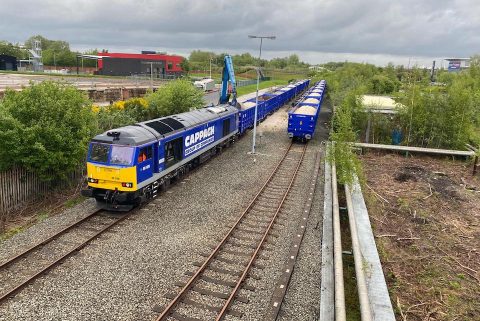HHLA’s rough start of year reflects on rail operations

HHLA Group experienced a tough Q1, with volumes and revenues falling. The group noted a 5,6 per cent revenue drop compared to the same period last year. The struggle was also reflected in rail and intermodal operations, which also followed a downward trend.
Specifically, in Q1 2023, rail transport volumes also fell by 5,6 per cent, with trains carrying around 340,000 TEUs. In the first months of 2022, rail contributed to HHLA’s volumes with 361,000 TEUs.
In general, the group’s whole intermodal segment was affected considerably. Container transport within it decreased by 5,4 per cent, with 408,000 TEUs transported in contrast to the 431,000 TEUs in early 2022. According to HHLA, all main intermodal routes produced lower numbers which are also attributed to decreases in short-sea traffic with other northern European ports and a lower throughput in road transport (4,2 per cent less).
However, one of the positive trends HHLA identified for Q1 2023 concerns rail and intermodal. Specifically, the group seems content with how METRAS’ (an HHLA subsidiary) is performing and the way that its railway network develops with the addition of new destinations. Simultaneously, with 43 per cent of its revenues coming from intermodal transport (157,3 million euros), HHLA deems it a positive development since there is relative growth in the segment.
Usual suspects responsible for challenges
HHLA did not escape the general slowdown in European businesses and respective economies. The group and its quarterly figures were affected heavily by the geopolitical situation caused by the war in Ukraine and related sanctions imposed on Russia. This situation resulted in decreased market consumption and, thus, less transport demand.
Inflation and high energy costs also played a substantial role in the results. Nevertheless, HHLA was prepared for the slowdown, which came as no surprise, following negative trends noticed already in late 2022. Nevertheless, the group expects the situation to improve, with its CEO Angela Titzrath saying she anticipates a market recovery in Q2 2023.
Also read:




